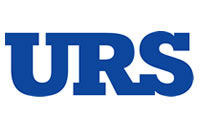Set priorities and boundaries for task allocation to optimize everyone’s time.
By Tom Moriarty for Plant Services Magazine
Plant Services, March 31, 2017
An engineering manager supporting a maintenance organization was distraught. He had several people giving him direction on how he and his small staff should be allocating their time. He felt as though he and his team were trying to put 50 pounds of potatoes in a 30-pound-capacity sack. There were only so many hours in the day.
When we think about the all-too-common scenario that the engineering manager was facing—too many people making too many demands on his team’s time—we see that the problem likely is twofold. First, too many people are handing priority work to the team. This is perhaps the more straightforward problem to solve. The manager must be the central point of contact for his team. Team members should not accept tasks that do not come from their manager. In addition, the department head to whom the engineering manager reports should provide clear guidance on priorities so that the manager can make better decisions on what work to authorize and how to balance the workload.
It is the department head’s responsibility to provide guidance to the managers when executives seek to task lower-level managers directly. An organizational chain of command exists for a reason. Information should flow up and down the organization through established channels. Senior decision-makers need input so they can make the best decisions. Lower-level leaders need clear, decisive guidance so they can carry out what the senior leaders need done.
The second of the twofold problem stems from the fact that the team did not have good time management practices. Each employee is expected to provide eight hours of productive time during the work day. The engineering team was certainly not slacking off; members worked very hard. However, the team did not properly plan and track time spent on assigned projects.
One of the lessons we teach in our Productive Leadership workshops is time management. Time management is great for helping people make sure they make time for the important things that need to get done. But managing your time and having your team better manage its time has another benefit.
Properly planning projects means that you allocate work time to the priorities that you have been assigned, estimating and adjusting the project status periodically as the project progresses. When a team member works multiple projects, he or she must integrate all projects into an overall schedule. Using a project management software tool to lay out individual project schedules or schedules for an entire team will let you graphically show your team’s time and effort allocation.
Many organizations use Microsoft Project, but it can be expensive to have multiple seat licenses. I’ve recently discovered Smartsheet, a cloud-based project software tool that works well for this type of project tracking. Smartsheet lacks some of the high-powered features of Project, but it is inexpensive and easy to use. If you don’t have access to a project management software tool, at least use a calendar or an Excel spreadsheet to graphically show use by project.
When you show a realistic layout of the time it takes to complete projects and you track your progress, it can become apparent to others that your time is fully utilized. Providing a graphical utilization chart to the manager or department head and asking them for guidance on priorities will communicate your resource constraints.
Your goal is to encourage discussion of priorities and resource allocation. The more senior someone is in an organization, the more he or she gets paid to make decisions. If you’re a team manager, it would be in your best interest to provide the person to whom you report with the information he or she needs to make the best decision possible.
When you have the priorities discussion with your boss, remind him or her that the more priorities change, the less efficient your team will be at completing tasks. Encourage your boss to resist frequent changes or ambiguous directions.
Shelter your team from multiple people directing them, and document and share your team’s planned activities. Doing so is an important part of being a great leader.


















